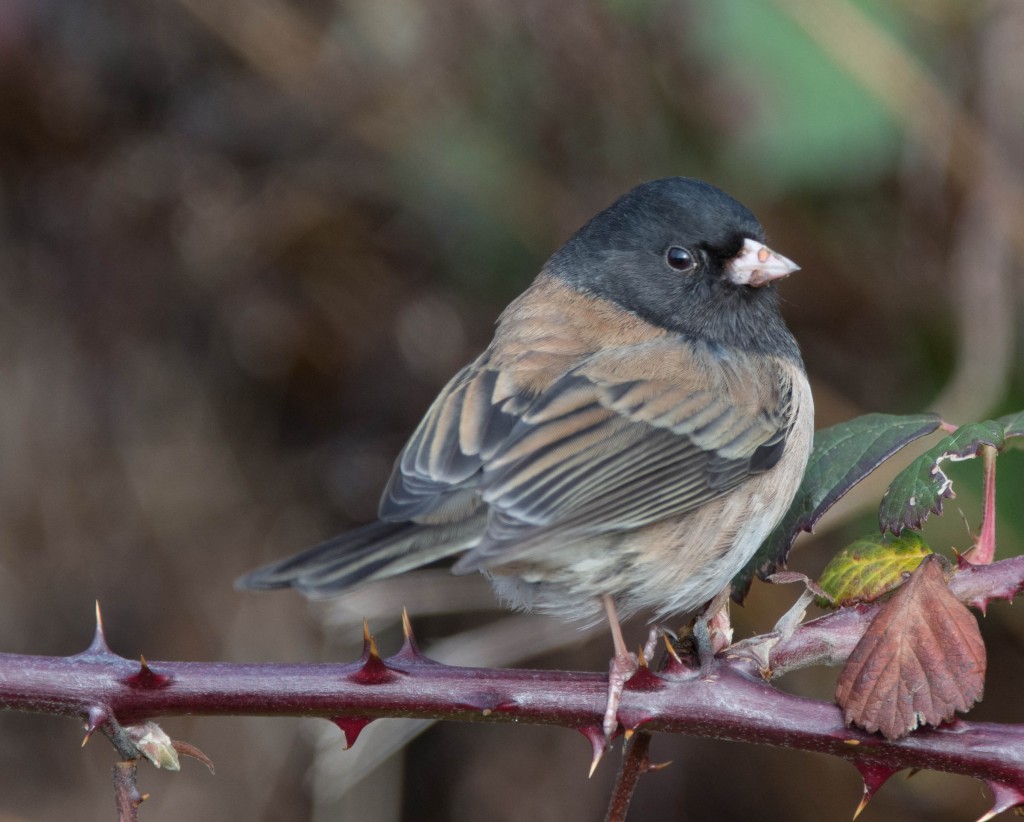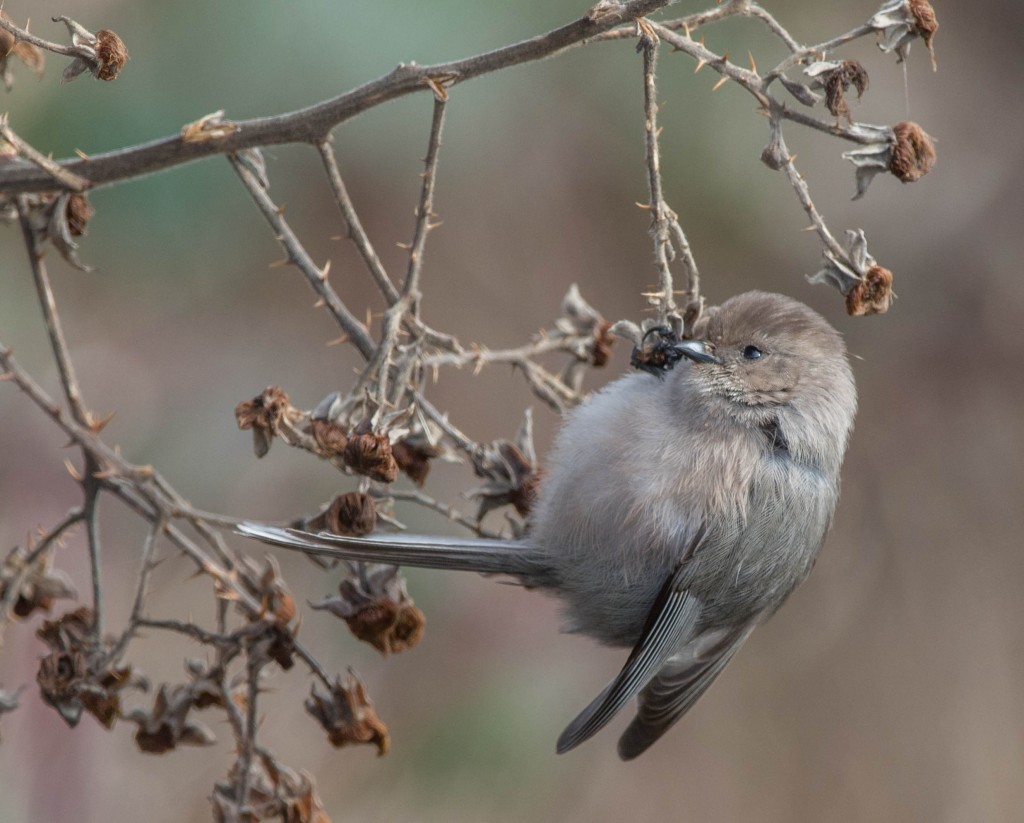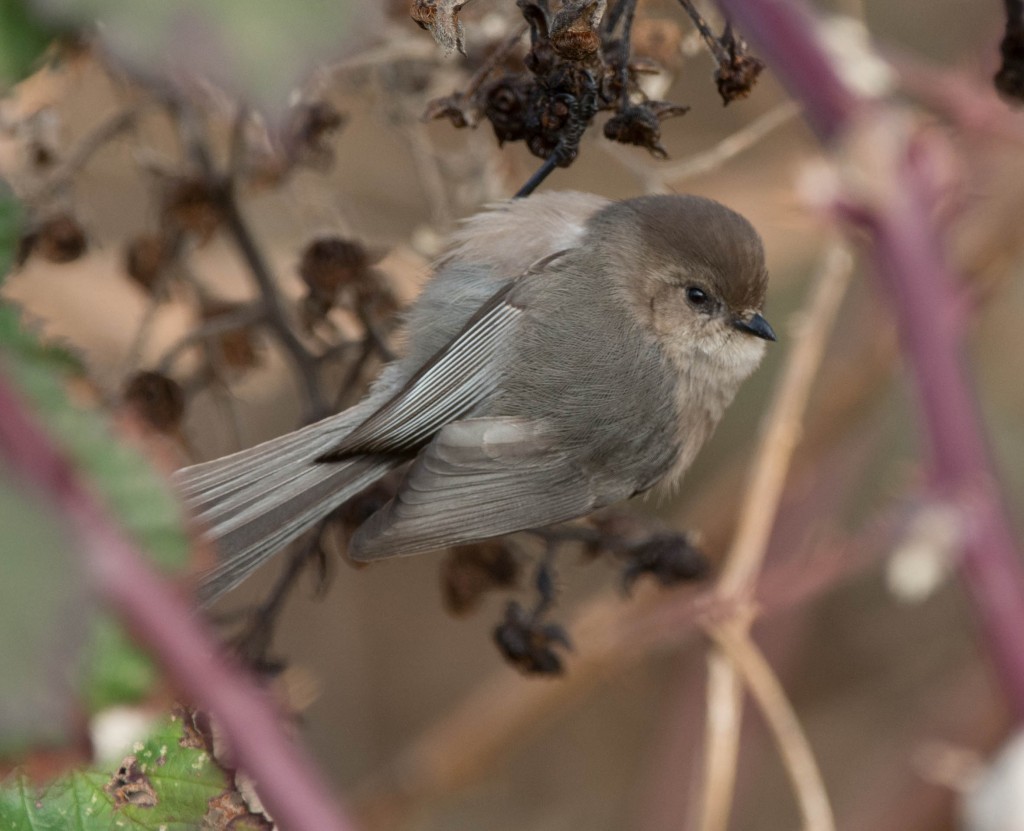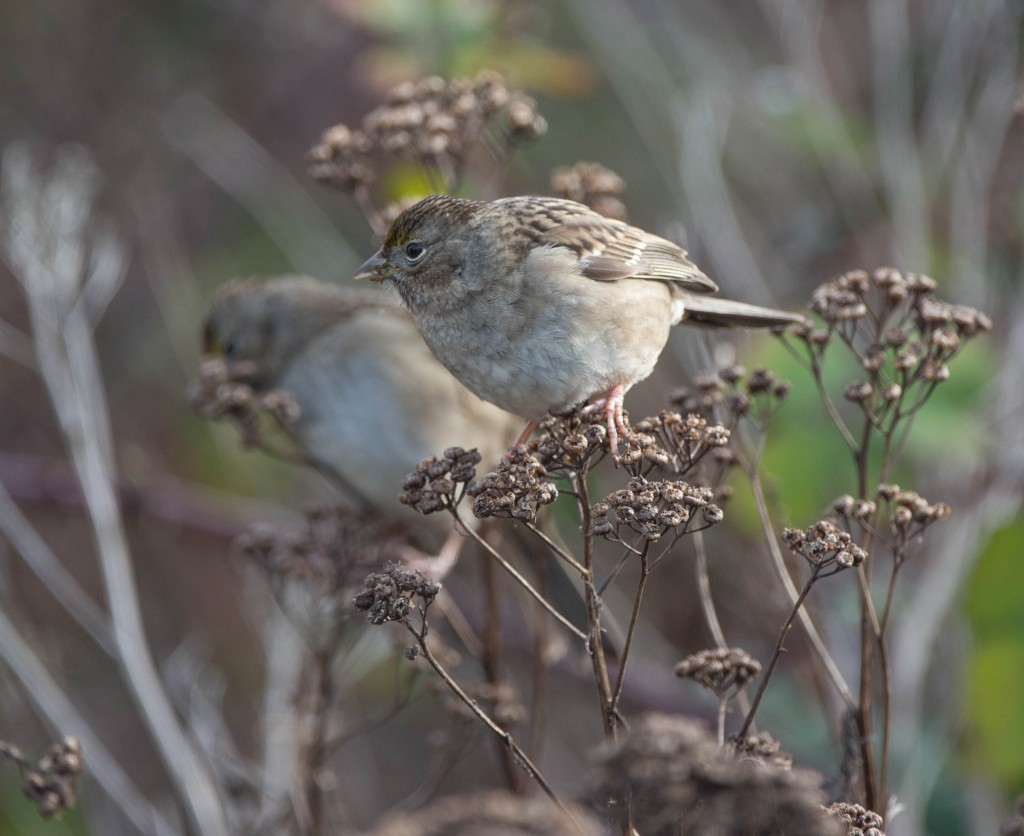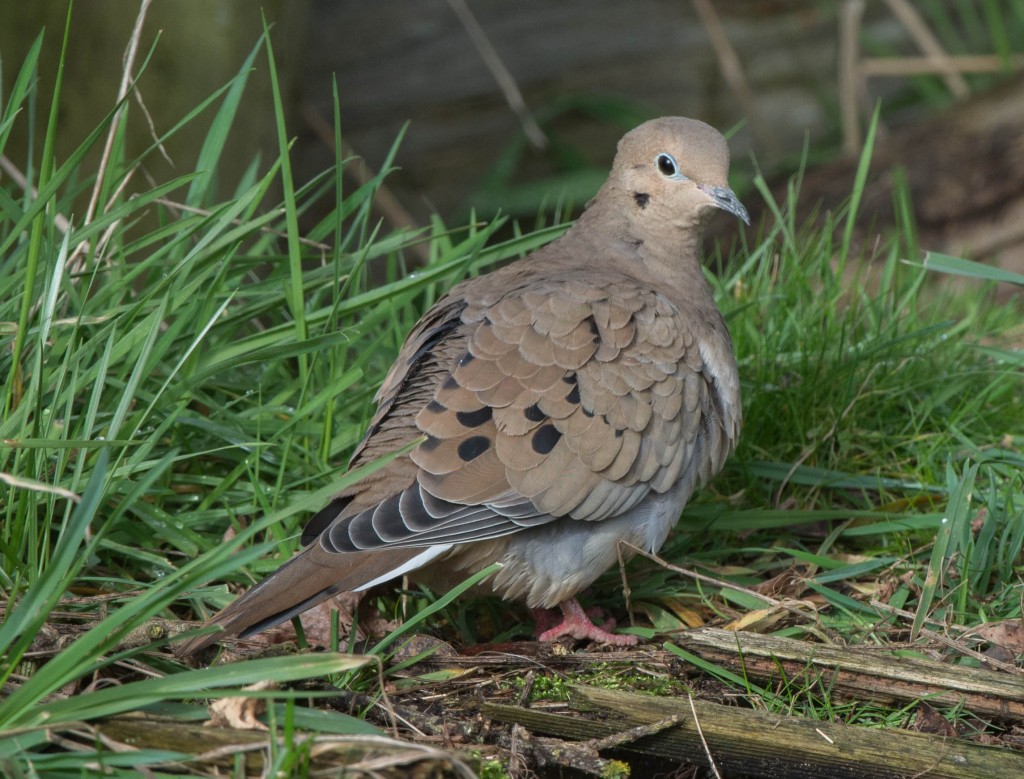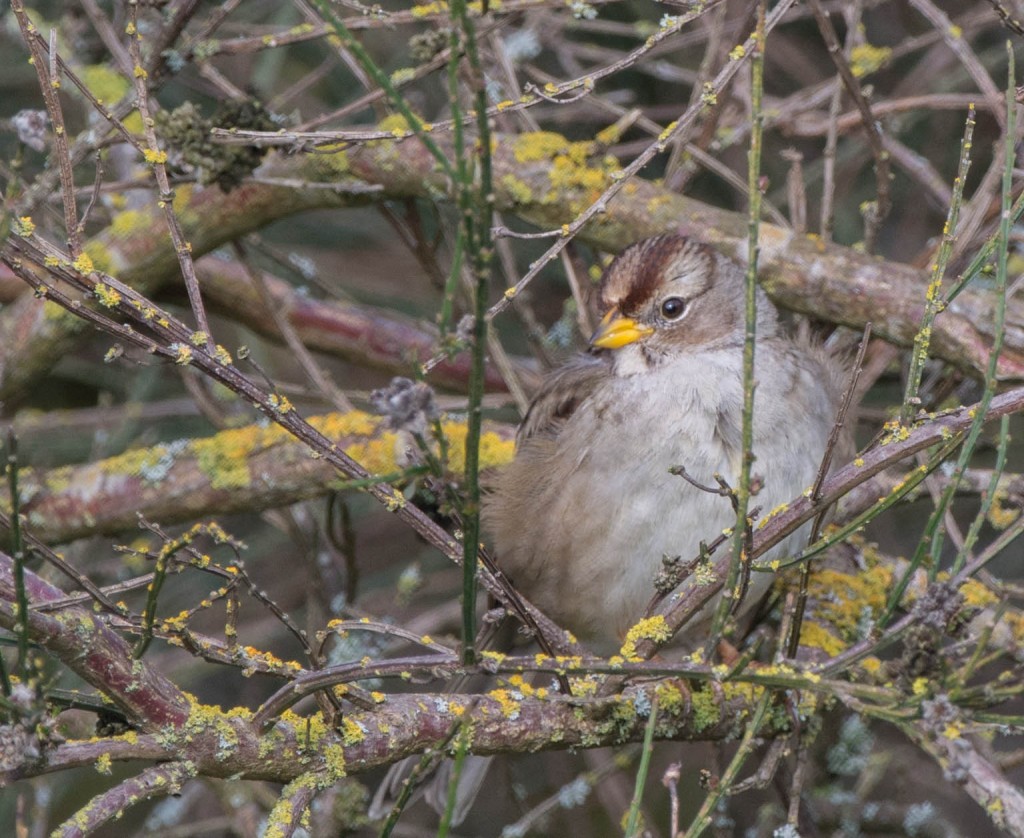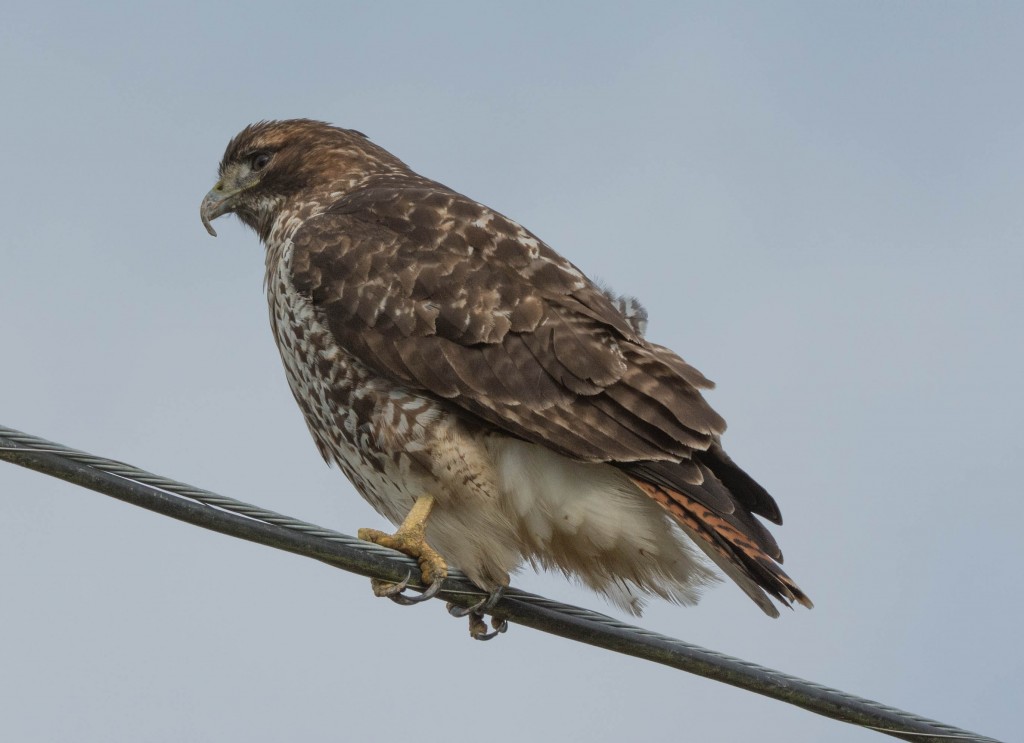I managed to get out for another day of photography on the last day of January. Early appearances were that the clouds which had dogged us for several days were being nudged along by a north wind, so although it seemed a little cooler than usual due to the wind at least the rain would be gone. The clouds did dissipate, but not to the extent that we had any direct sun. This would be, as opposed to my previous post, a day of numerous accomplishments but with smaller birds.
The wind was apparently discouraging to the waterfowl, so my first stop was a rather confined area I’ve found productive for birding which is located just off March Point. But this area, at first, seemed deserted. However I managed to locate a large group of Golden-crowned sparrows and before I left I had photographed several species of birds, most, if not all, eating either yarrow seeds or bugs hiding among the dried up seed heads. Before I left the area I had also photographed Bush tits, Dark-eyed juncos and a single American goldfinch, all working the seed heads. My suspicions are that these juncos I photographed were the same as the ones I photographed a week or so ago.
My next destination was Channel Drive along the Swinomish Channel. There I found the first White-crowned sparrows (at least 3-4) I had seen in many months and a nice supply of Mourning doves, a species that I have found difficult to photograph in a natural setting in the Pacific Northwest.
Finally, on Fir Island, I found this Red-tailed hawk perched on a power line. This one was overseeing a large group of ducks on some water and was more tolerant of my presence than most of the Red-tails. If you look carefully you can see that this bird’s beak has a prominent hook to it. I understand that this is a problem among some of the Red-tailed hawk population. While it doesn’t interfere with the birds obtaining food, it interferes with the birds ability to dissect the food which can negatively affect the birds’ health.

